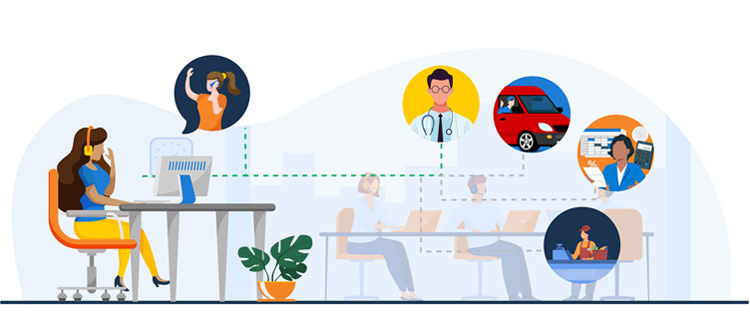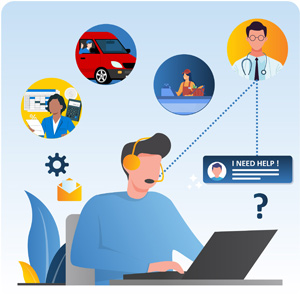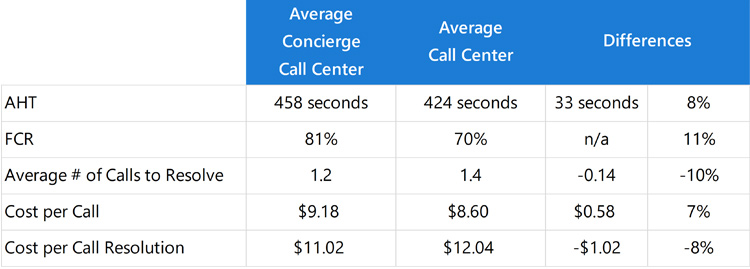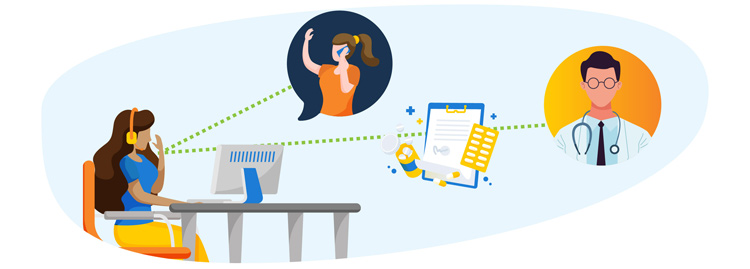What is Concierge Service?

The practice of concierge service is moving from the hotel industry to the call center industry. To most people, a concierge service means employees were working at a high-end hotel, standing behind desks, providing them with information about the best restaurants, directions, or where to purchase theater tickets. In some cases, they can make dinner reservations or purchase event tickets on a customer's behalf. In most cases, they provide information, just as websites or call center agents do. Interestingly, providing concierge service is an excellent opportunity for call center agents to resolve customer calls on the first call that otherwise might go unresolved.
How concierge service works in a call center environment is an agent assists a customer who needs to call or contact another department or organization for a reference code, more information or authorization, to help resolve the customer's call. Specifically, for call center concierge service, an agent tells the customer that they will call the necessary department or organization on their behalf or with them on the line to get the required reference code, information, or authorization. In most cases, when using concierge service, an agent calls another department or organization while the customer is on the phone and a three-way conversation occurs.
Concierge service makes the customer feel like the organization has taken complete ownership of resolving their inquiry or problem. Also, when an agent uses the concierge service practice, it provides higher First Call Resolution (FCR) and customer satisfaction (Csat) performance. The higher FCR is because the customer does not have to call or contact third parties such as a doctor's office, head office, bank, or retail store. When the concierge service is used, the customer feels the call center agent is an advocate for them, and as a result, the customer has a higher customer satisfaction experience.
SQM tracks the reasons why customers have to call back two or more times. Our research shows that customers who have to call back to provide the agent with more information are one of the main reasons why a customer has to call two or more times to get their call resolved. In fact, 4% of all repeat calls result from a customer having to phone the call center back to provide the agent with more information to resolve their call.
Concierge Service – Key Performance Indicators
The concierge service represents an excellent opportunity to help improve the call center's performance for customers who had to call back two or more times because they had to provide the agent with more information. However, the number one objection that call center managers have about implementing the concierge service is the fear of drastically increasing average handle time (AHT) and increasing their call center operating costs. Figure 1 shows an example of a call center providing concierge service and its impact on call center key performance indicators (KPIs) such as AHT, FCR, average calls to resolve, cost per call, and cost per call resolution.

Figure 1: Concierge service KPI comparison

As can be seen in Figure 1, the concierge service call center AHT increased by 33 seconds over the call center industry average AHT performance for all calls. Also, the cost per call for the concierge service call center is $0.58 higher than the call center industry average. These two call center metrics are the main reasons why organizations do not move forward with concierge service. However, concierge service call centers have fewer customers calling back to provide more information to the agent. Conversely, concierge service is one of the main reasons why call centers using that practice have better FCR and an average number of calls to resolve performance than the call center industry average.
When cost per call resolution is assessed (cost per call x average number of calls to resolve inquiry), there are actual savings of $1.02 per call for the call centers that use the concierge service. At SQM, we would not say that the cost per call resolution saving resulted entirely from the concierge service; instead, 10% to 25% of those savings could be attributed to the concierge service. The concierge service savings are based on areas identified with lowering or eliminating customers having to call back and provide required information to the agent to resolve a call.
If the decision to use the concierge service were based on the cost per call metric, then the call center would likely not want to proceed with this practice. However, if the evaluation of using the call center concierge service is based on the cost per call resolution metric, then the call center would probably seriously consider proceeding with the concierge service.
It is also important to note that the call center's operating costs can be lowered by eliminating call-backs from customers who have to provide the agent with more information. SQM has found that it is more efficient to have one longer call than to have two or more calls dealing with the same inquiry or problem. Also, Csat is substantially higher when a customer only has to make one longer call versus making repeat calls to resolve the same inquiry or problem.
Other essential aspects of the call center concierge service are that agents focus on doing whatever it takes to resolve a customer's call. Also, agents become conditioned to go the extra mile and being an advocate to help customers resolve their inquiries or problems on any type of call. Having agents routinely go the extra mile leads to significant improvements in the performance of the call center's FCR, Csat, and cost per call resolution.
Define Concierge Service Best Practices

The concierge service best practices that help the call center improve the performance of its FCR, Csat, call resolution, and cost per call resolution is as follows:
-
Rather than focus on AHT, managers focus on doing the right thing for the customer. Managers remove AHT metrics from individual agent scorecards and instead concentrate on calls resolved and FCR at the organization level
-
Concierge service standards are developed and communicated to all stakeholders
-
Call handling standards clearly state that whenever customers have to call another department or organization to get more information, to have their issue resolved, it is the agent's responsibility to get the required information on behalf of, or with, the customer
-
The call center's QA program and post-call customer surveys are used to measure whether or not agents provided effective concierge service
-
Using customer feedback, concierge service is measured, benchmarked, tracked, and reported on an ongoing basis and this information is used to make improvements in their service
-
Agents are trained and coached on how to provide concierge service
-
Agents are recognized for delivering concierge service
-
Agents are held accountable for their Csat and call resolution performance
-
Agents educate customers, when possible, on using self-service channels to get information
-
Agents are educated on what fulfillment departments need to do to process items such as requests, orders, and claims
-
The call center is always looking for ways to improve its people, process, and technology practices to avoid customer call-backs due to the customer having to provide the agent with more information
-
Agents go the extra mile and have a customer advocacy attitude to resolve the customer's call. This attitude is primarily manifested by concierge service calls but is also transferred to other call types
Quick Related Links
First Call Resolution Definition First Call Resolution PPT First Call Resolution Benefits
First Call Resolution Strategies First Call Resolution Call Handling First Call Resolution Formula Calculate First Call Resolution Rate What is a good FCR Rate? QA Form Customer Quality Assurance
